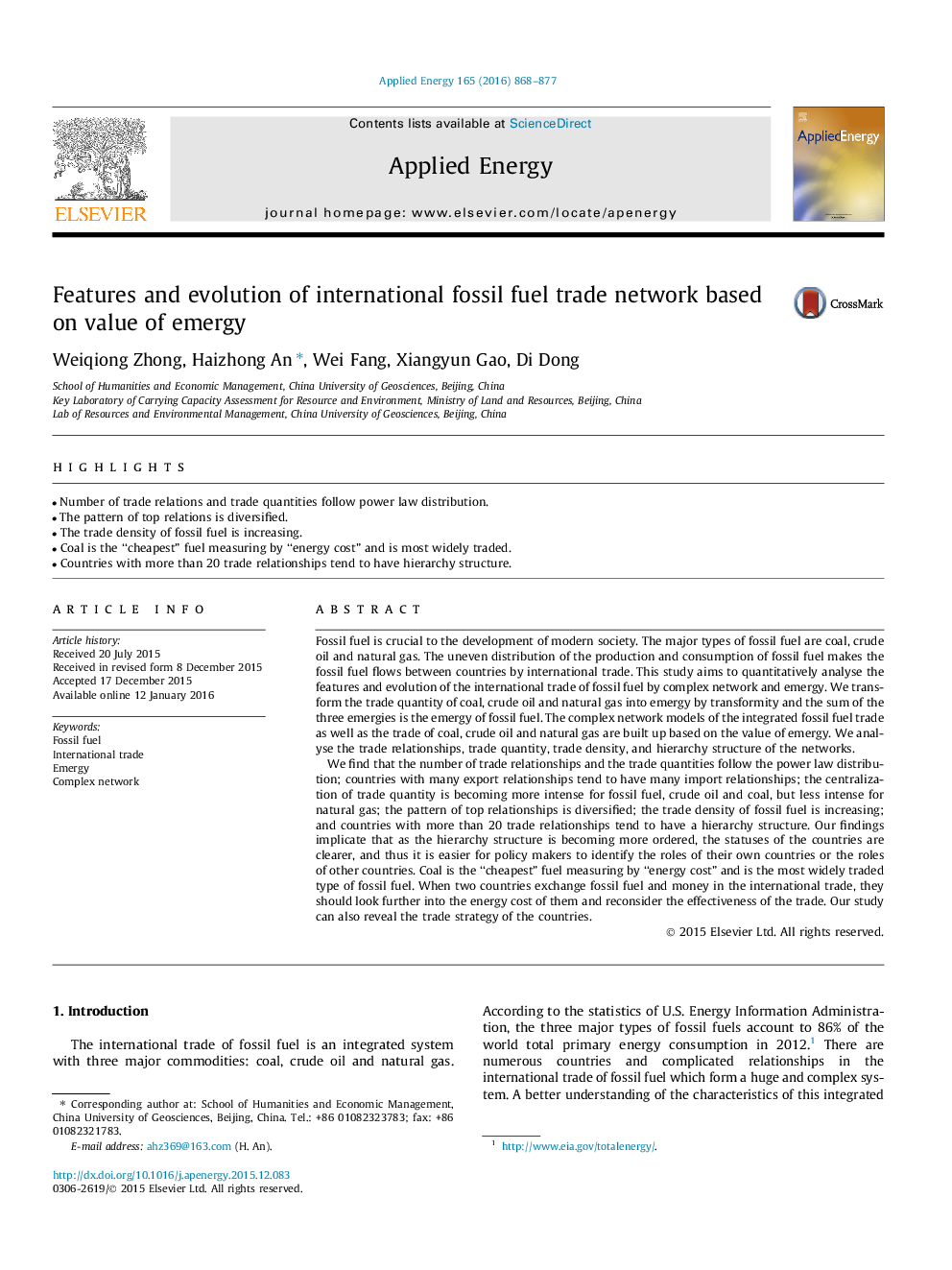| Article ID | Journal | Published Year | Pages | File Type |
|---|---|---|---|---|
| 6684097 | Applied Energy | 2016 | 10 Pages |
Abstract
We find that the number of trade relationships and the trade quantities follow the power law distribution; countries with many export relationships tend to have many import relationships; the centralization of trade quantity is becoming more intense for fossil fuel, crude oil and coal, but less intense for natural gas; the pattern of top relationships is diversified; the trade density of fossil fuel is increasing; and countries with more than 20 trade relationships tend to have a hierarchy structure. Our findings implicate that as the hierarchy structure is becoming more ordered, the statuses of the countries are clearer, and thus it is easier for policy makers to identify the roles of their own countries or the roles of other countries. Coal is the “cheapest” fuel measuring by “energy cost” and is the most widely traded type of fossil fuel. When two countries exchange fossil fuel and money in the international trade, they should look further into the energy cost of them and reconsider the effectiveness of the trade. Our study can also reveal the trade strategy of the countries.
Related Topics
Physical Sciences and Engineering
Energy
Energy Engineering and Power Technology
Authors
Weiqiong Zhong, Haizhong An, Wei Fang, Xiangyun Gao, Di Dong,
